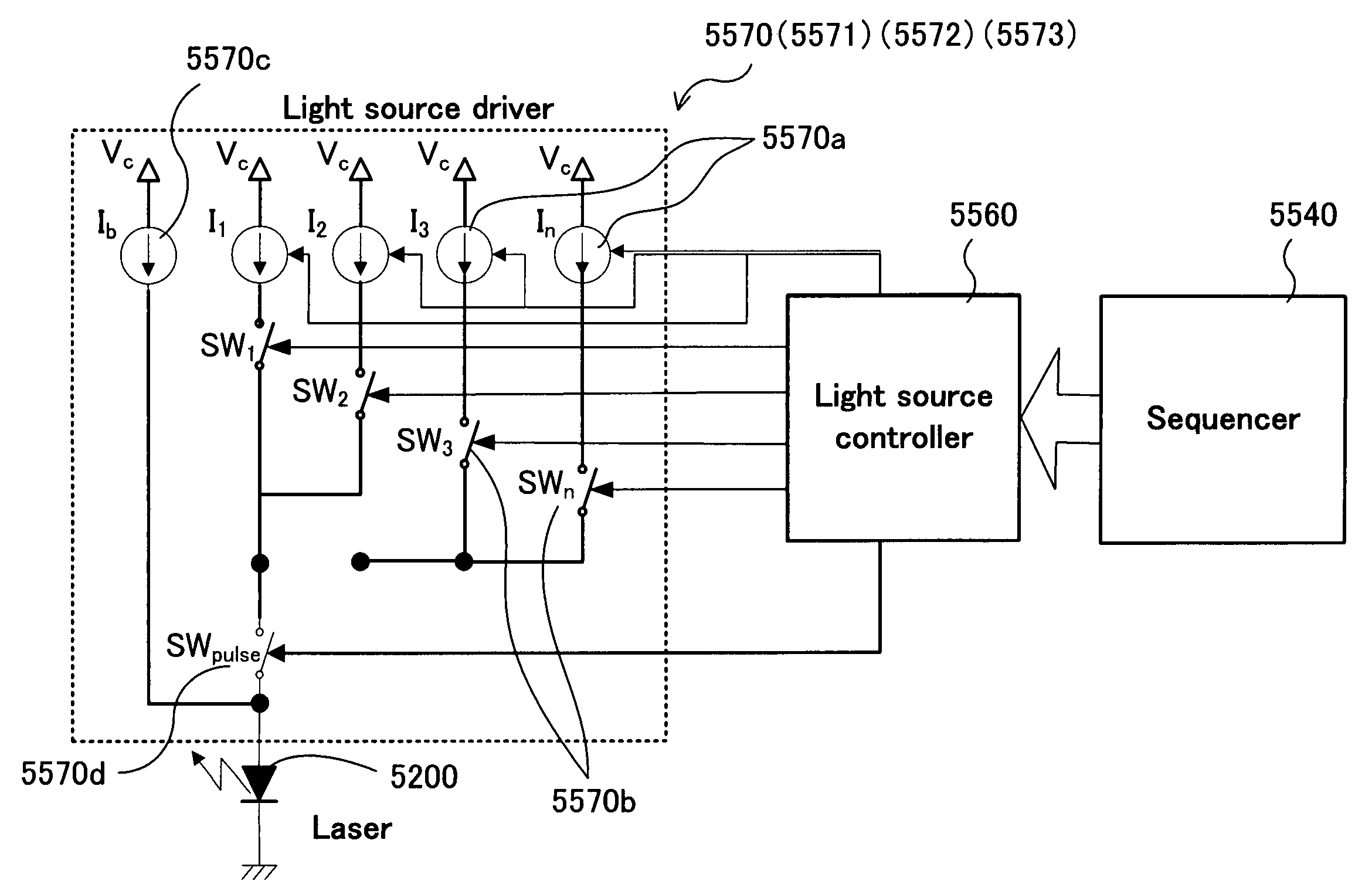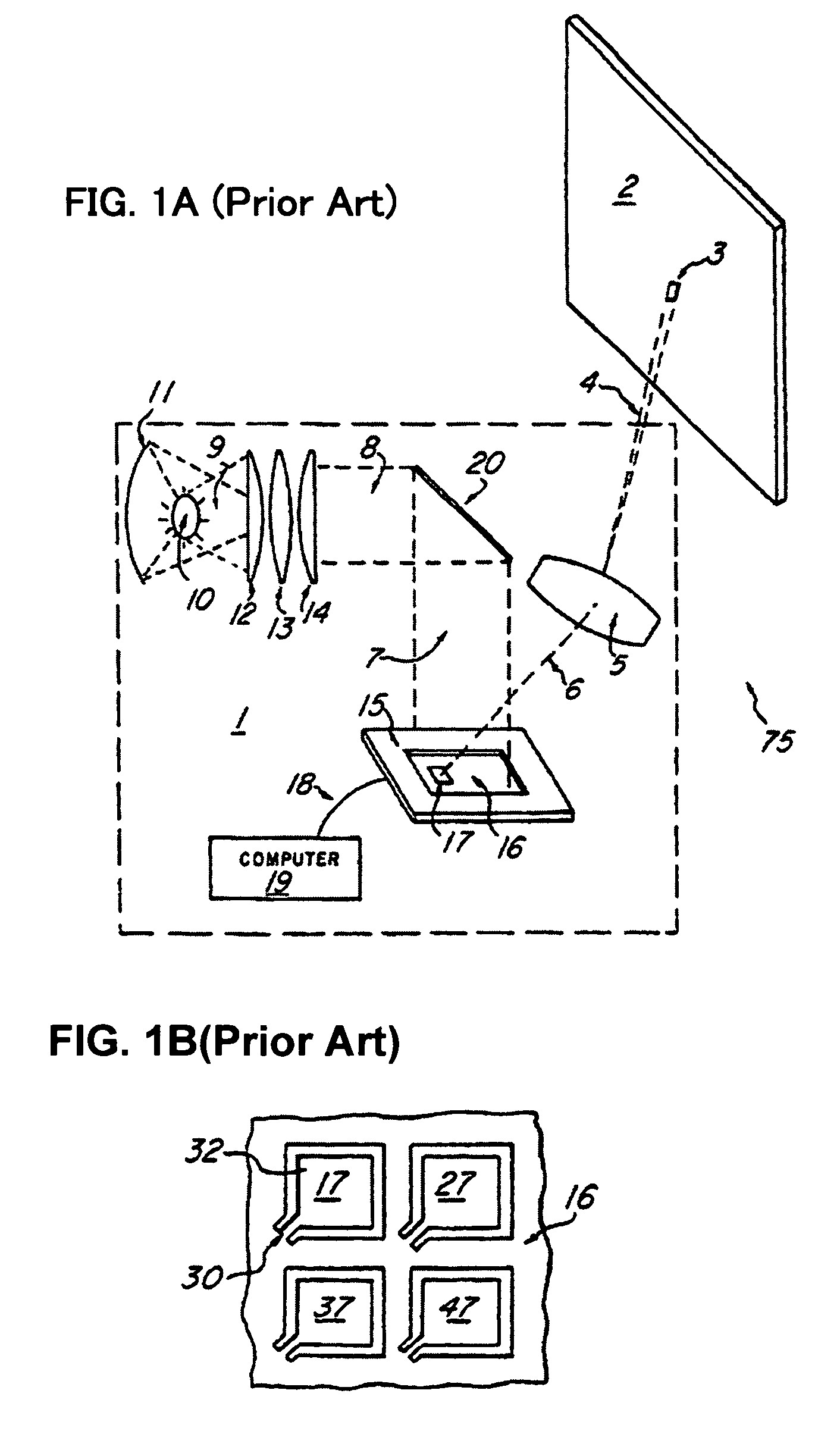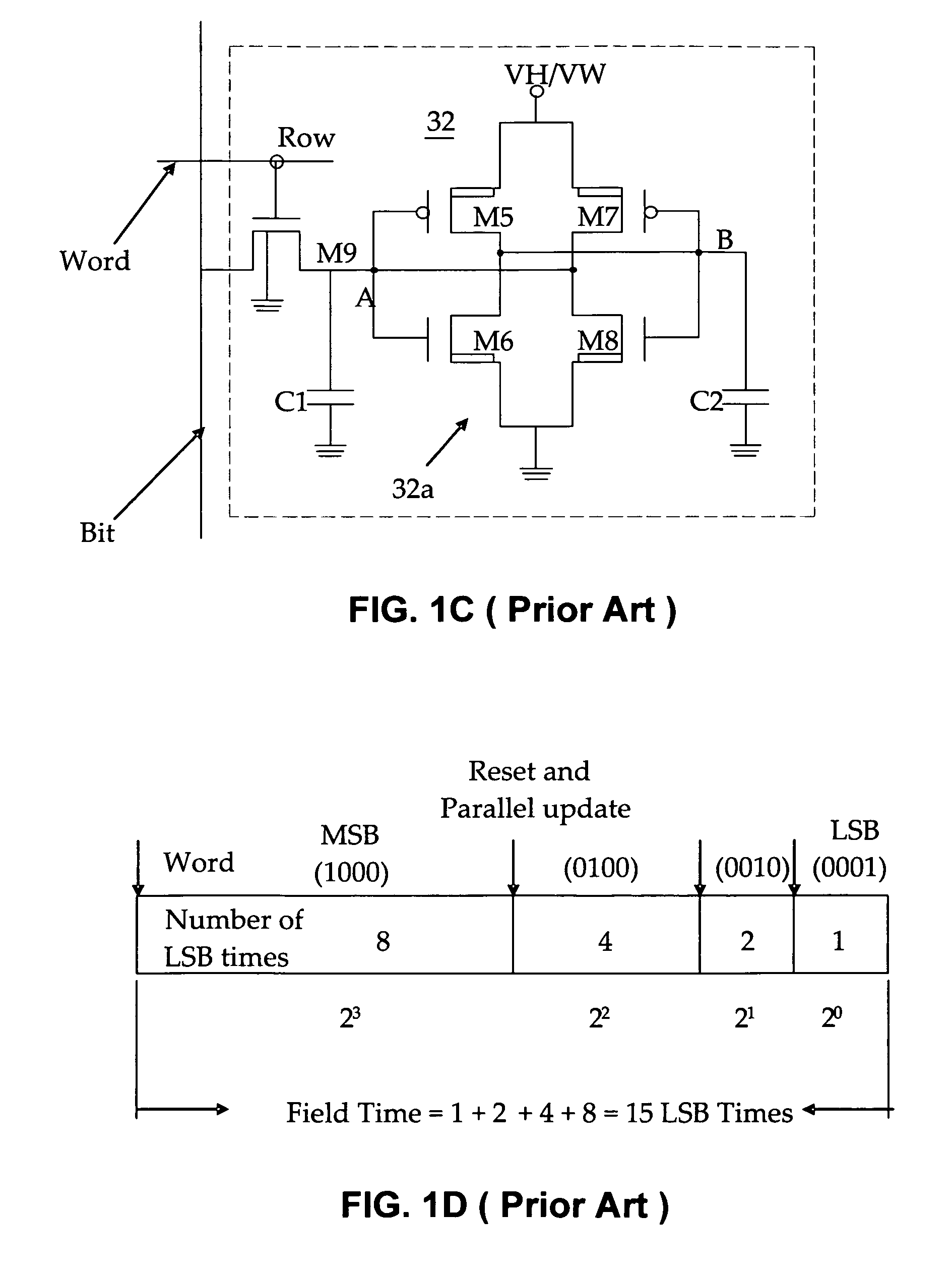Projection apparatus using variable light source
a technology of projection apparatus and light source, applied in the field of projection apparatus, can solve the problems of limitation and difficulty of high-quality image display, adverse effect of image quality, and limitation of display quality
- Summary
- Abstract
- Description
- Claims
- Application Information
AI Technical Summary
Benefits of technology
Problems solved by technology
Method used
Image
Examples
Embodiment Construction
[0061]A description of the mirror device, as the premise upon which the embodiment of the present invention is based, follows. Thereafter, a description of a preferred embodiment of the present invention is presented.
[0062]Projection apparatuses using a spatial light modulator, such as a transmissive liquid crystal, a reflective liquid crystal, a mirror array, etc., are widely known.
[0063]A spatial light modulator includes a two-dimensional array that arranges, enlarges, and then displays on a screen by way of a projection lens arrayed as tens of thousands to millions of miniature modulation elements for projecting individual pixels corresponding to an image.
[0064]The spatial light modulators generally used for projection apparatuses are of primarily two types: 1) a liquid crystal device for modulating the polarizing direction of incident light; a liquid crystal is sealed between transparent substrates and provides them with a potential, and 2) a mirror device that deflects miniatur...
PUM
 Login to View More
Login to View More Abstract
Description
Claims
Application Information
 Login to View More
Login to View More - R&D
- Intellectual Property
- Life Sciences
- Materials
- Tech Scout
- Unparalleled Data Quality
- Higher Quality Content
- 60% Fewer Hallucinations
Browse by: Latest US Patents, China's latest patents, Technical Efficacy Thesaurus, Application Domain, Technology Topic, Popular Technical Reports.
© 2025 PatSnap. All rights reserved.Legal|Privacy policy|Modern Slavery Act Transparency Statement|Sitemap|About US| Contact US: help@patsnap.com



